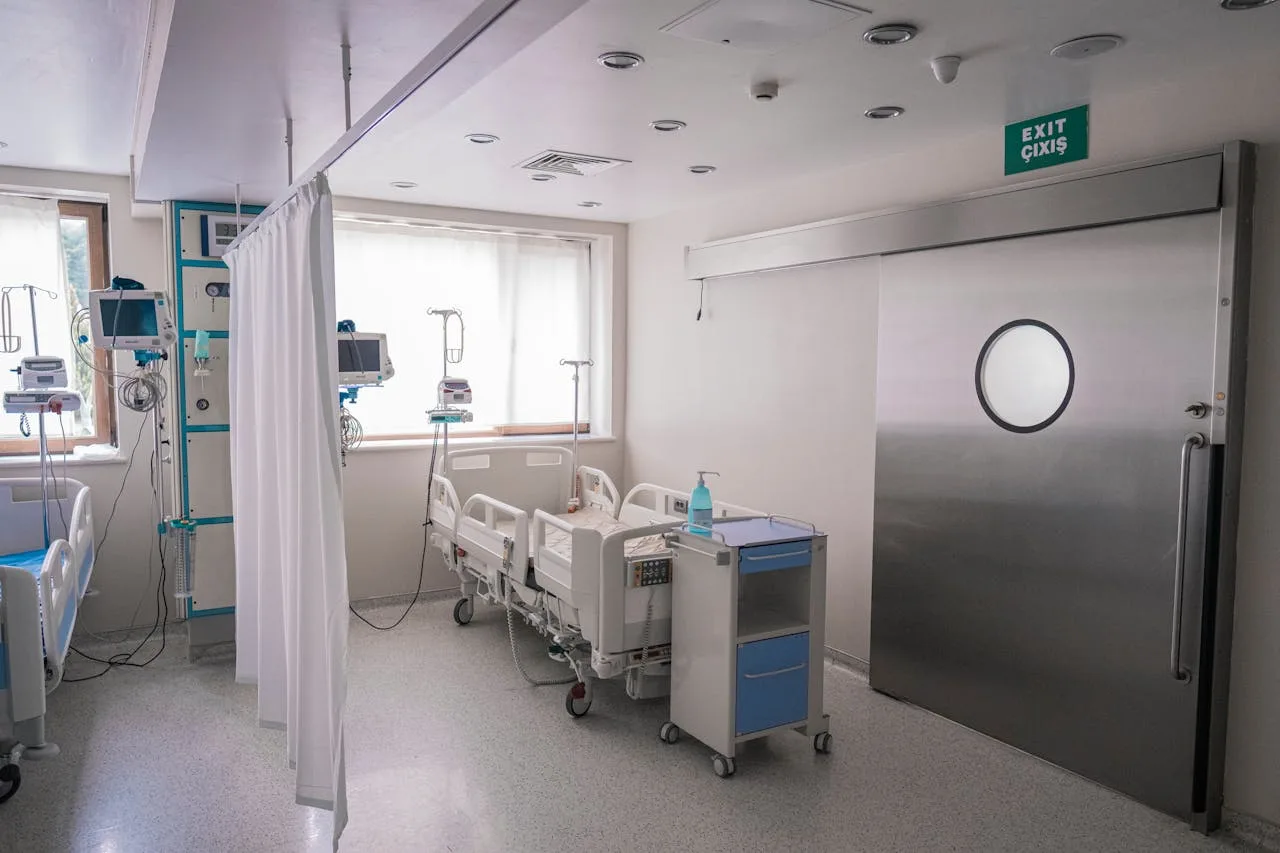Masimo (NASDAQ: MASI) announced compelling new findings from an exploratory analysis of its Investigation of Skin Pigmentation Effect on Performance of Pulse Oximetry (INSPIRE) feasibility study, published in CHEST Critical Care. Led by Dr. Andrew Goodwin and colleagues at the Medical University of South Carolina (MUSC), the study found that Masimo SET® pulse oximetry accurately measured oxygen saturation (SpO₂) in critically ill adult patients of all skin tones, even in those requiring vasopressors for low perfusion. Importantly, no occult hypoxemic events—instances where low blood oxygen levels go undetected—were reported.
This study marks a breakthrough in the clinical evaluation of pulse oximetry because, unlike traditional laboratory-based accuracy assessments, it was conducted directly in a hospital intensive care unit (ICU). Previous studies have typically relied on controlled laboratory testing with healthy volunteers or retrospective analyses of hospital data. In contrast, the MUSC study compared real-time SpO₂ readings from Masimo SET® sensors with arterial blood oxygen saturation (SaO₂) levels collected invasively at clinically relevant times.
The study’s design enabled comparisons at key clinical moments, including when spontaneous patient condition changes prompted arterial blood draws, providing a robust and realistic evaluation of device accuracy. This approach ensured that accuracy was assessed precisely when it matters most—during critical decision-making in patient care.
A Real-World Accuracy Breakthrough
Once complete, the INSPIRE study is expected to be the largest prospective clinical investigation to evaluate pulse oximetry accuracy across varying skin tones in critically ill adults. The current findings align with previous research confirming that Masimo SET® performs consistently across skin pigmentation levels, even during low perfusion states, without significant bias between dark- and light-skinned patients.
The researchers successfully demonstrated that the technical rigor of laboratory studies can be replicated in real-world hospital settings. Their innovative methodology—using synchronized data collection and validated skin colorimetry—set a new standard for evaluating pulse oximetry technology under realistic clinical conditions.
For this preliminary analysis, the researchers used data from the first 50 of a planned 502 patients. Even with this initial cohort, Masimo SET® met and exceeded FDA accuracy specifications, supporting its reliability and precision in the most demanding care environments.
Addressing Longstanding Study Limitations
The INSPIRE study was specifically designed to overcome methodological weaknesses that have limited earlier studies. Traditional analyses often relied on self-reported race as a proxy for skin pigmentation, retrospective data collection, and non-standardized device use, all of which reduce the precision of conclusions.
Moreover, earlier research often failed to consider real-world confounders, such as patient motion, low perfusion, anemia, and other conditions common among critically ill patients. Such factors can significantly affect pulse oximetry readings.
By contrast, INSPIRE integrates rigorous measurement techniques with everyday clinical workflows, allowing the research team to accurately examine how skin pigmentation affects pulse oximetry in a hospital ICU setting.
The researchers emphasized that their design “overcomes these challenges while examining the clinically relevant outcome of occult hypoxemia—an error that can have life-threatening consequences.”
Study Design and Patient Population
Between January and July 2024, the team enrolled 107 adult ICU patients at MUSC, with 50 patients meeting criteria for this analysis. Participants were categorized by skin pigmentation using a validated noninvasive handheld skin colorimeter, rather than race, ensuring objective classification. Patients were grouped according to Individual Topology Angle (ITA) into light and dark skin tone categories.
SpO₂ measurements were captured using Masimo RD SET® sensors connected to Rad-97® Pulse CO-Oximeters®. Across the 50 patients, 84 blood samples were collected, producing 80 valid paired SpO₂–SaO₂ data points from 49 patients. Of these, 26 patients were classified as having dark skin pigmentation, yielding 41 data pairs, while 24 patients with lighter skin tones contributed 39 data pairs.
Significantly, 31 data pairs (39%) were obtained during low perfusion conditions (<1.4%), representing some of the most challenging circumstances for pulse oximetry accuracy.
Results: High Accuracy, No Occult Hypoxemia
The analysis revealed that Masimo SET® pulse oximetry achieved an overall accuracy of 1.47% ARMS (root-mean-squared error), comfortably within FDA specifications for both motion and no-motion conditions (1.5% ARMS) and well below the industry-standard 3% ARMS threshold.
The median bias—the difference between noninvasive SpO₂ and invasive SaO₂—was just -0.6%, which is not clinically significant. A small difference of 0.7% between dark and light skin tone groups was statistically detectable but clinically irrelevant (-0.2% vs. -0.9%; p=0.0004).
Crucially, despite the inclusion of many patients at high risk for hidden hypoxemia, the researchers reported zero occult hypoxemia events. This finding reinforces the real-world reliability of Masimo SET® technology across diverse patient populations.
The study concluded that the INSPIRE design “can feasibly enroll critically ill patients across the full spectrum of skin pigmentation while facilitating precise data collection using standard-of-care workflows.”
Ongoing Data Collection and Future Impact
Data collection for the full 502-patient INSPIRE study is ongoing. When complete, the expanded dataset will allow researchers to more definitively quantify the relationship between skin pigmentation and pulse oximetry accuracy, as well as compare the prevalence of occult hypoxemia across different groups.
The researchers plan to publish full results in 2025, providing what is expected to be the most comprehensive real-world evaluation of pulse oximetry performance ever conducted in an ICU setting.
Expert Commentary
Dr. Andrew Goodwin, Principal Investigator and Section Chief of Critical Care at MUSC, highlighted the clinical importance of the findings:
“Masimo SET® was chosen for our INSPIRE trial because of its industry-leading accuracy. We are pleased to contribute to the growing body of evidence examining pulse oximetry across varying skin tones. Our feasibility study shows that we are closer than ever to understanding how Masimo SET® performs in real-world ICU conditions. Although not yet definitive, our preliminary results suggest that Masimo SET® performs accurately across all skin tones.”
Dr. Daniel Cantillon, Chief Medical Officer at Masimo, emphasized the study’s implications for patient safety and health equity:
“The concern for dangerously overestimating blood oxygen levels is greatest among critically ill, poorly perfused patients with dark skin tones who are often moving. We’re encouraged to see no occult hypoxemia events and to confirm that INSPIRE’s unique design can rigorously evaluate performance in real clinical settings. The findings reaffirm Masimo’s top-tier accuracy, and we eagerly anticipate the full study results.”
Setting a New Standard in Clinical Accuracy Research
The MUSC INSPIRE feasibility study represents a landmark step forward in clinical pulse oximetry validation. By merging laboratory precision with real-world complexity, the study confirms that Masimo SET® technology delivers consistent, accurate results across diverse populations and clinical challenges.
As healthcare systems place increasing focus on equity and reliability in monitoring technologies, this research offers critical reassurance for clinicians and patients alike: accurate, bias-free oxygen monitoring is achievable for all skin tones, even in the most critically ill patients.
With the ongoing INSPIRE study poised to provide definitive results in 2025, Masimo continues to lead the field in advancing clinical accuracy, safety, and innovation in pulse oximetry—pioneering technologies that ensure every patient is seen, measured, and treated with precision.



